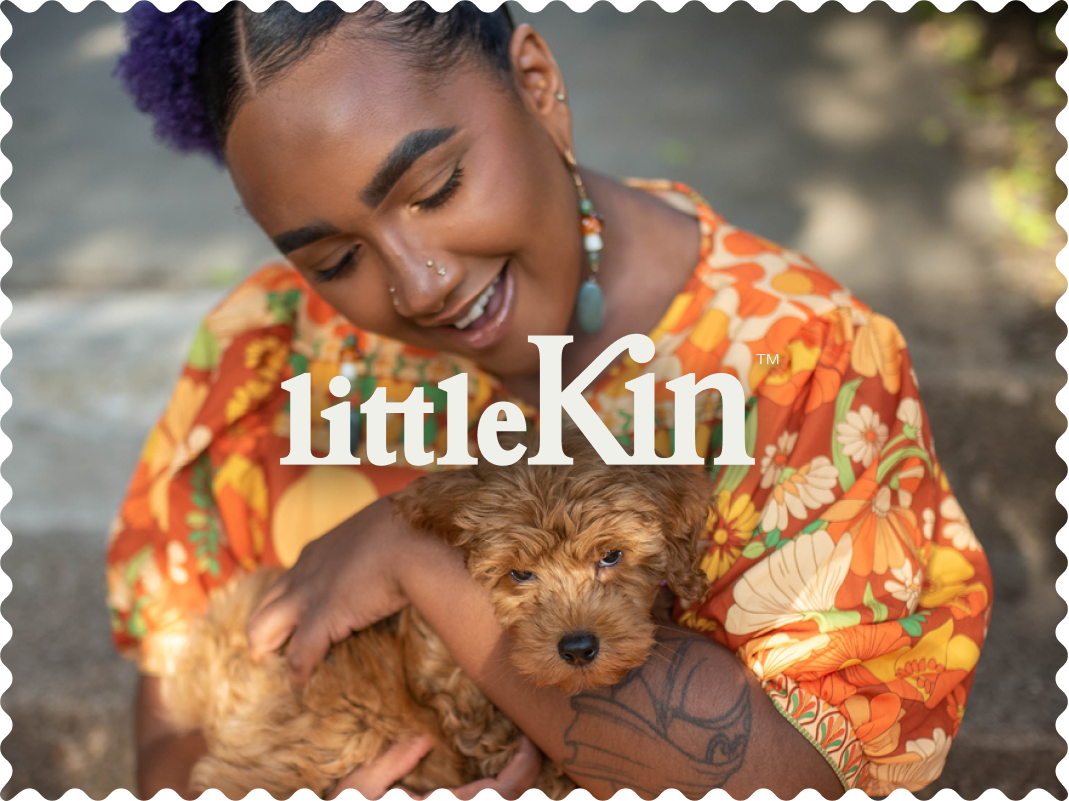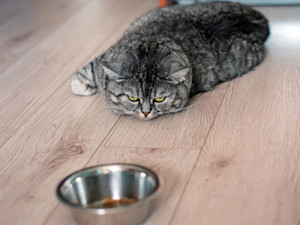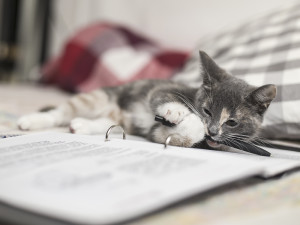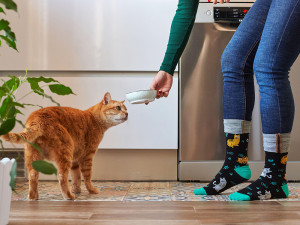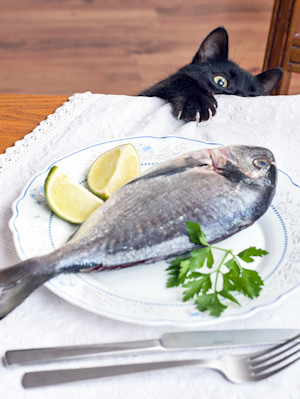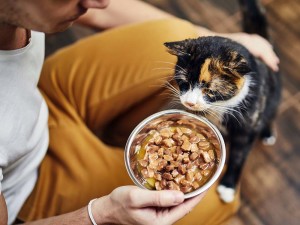TikTok Says Cats Should Only Eat From Puzzle Feeders, An Expert Weighs In
Should you really ditch your cat‘s food bowl?
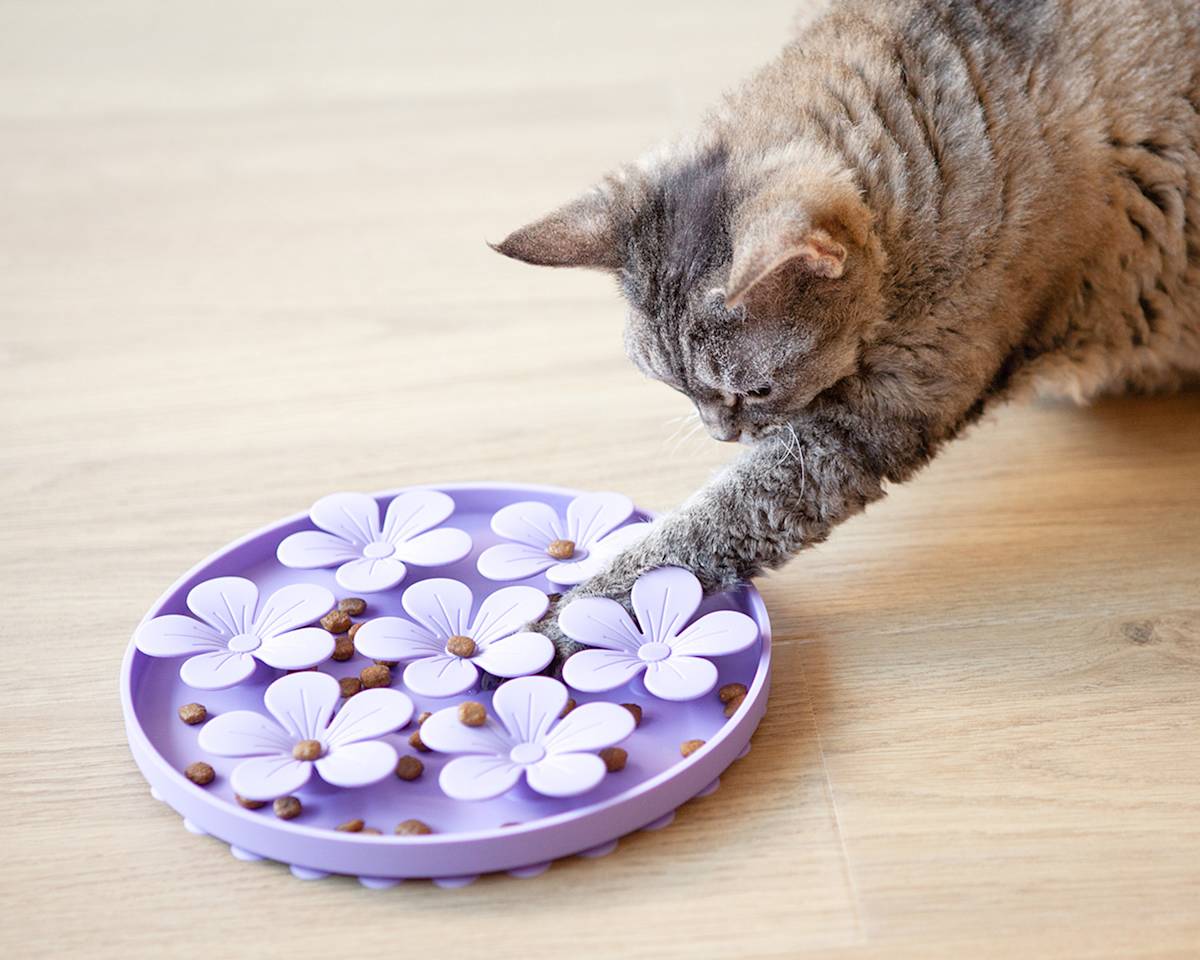
Share Article
TikTok is full of videosopens in new tab urging pet guardians to ditch the food bowl for goodopens in new tab, claiming it’s the key to a happier, healthier cat. But is feeding enrichment just hype, or is there real science behind puzzle feeders? Are you a bad pet parent if you haven’t “banned the bowl”? As a feline behaviourist, I’m all for enrichment, but here’s what I really think about puzzle feeders and whether they’re a must-have.
What are puzzle feeders, and why are they beneficial?
Puzzle feeders are toys or devices which require cats to ‘work’ for their food. Coming in various forms, they provide mental and physical stimulation, and research shows they can help reduce stress and anxiety, prevent boredom, and encourage movement and slow feedingopens in new tab. This makes them a valuable form of enrichment and a useful tool in behaviour modification and weight-management plansopens in new tab.
What does the science say?
The use of feeding enrichment is rooted in evolutionary and behavioural science. Domestic cats evolved from the African wildcat, a solitary hunter, so even though you serve your cat gourmet meals, they retain an innate need to engage in predatory behaviour. A cat’s predatory sequence has distinct phases: orient > stalk > chase > pounce > catch > kill > eat, but bowl feeding skips straight to the final phase. Puzzle feeders help activate the seeking and hunting phases by encouraging cats to use their senses to find food rather than passively consuming it. Sliding panels, lifting flaps or manipulating kibble out of crevices with paws or claws requires the same dexterity and problem-solving skills as extracting a rodent from the undergrowth or a tight hidey-hole. Some puzzles even mimic moving prey, triggering chase-and-pounce behaviour.
You may have heard of ‘contrafreeloading’ – a behavioural phenomenon defined as a preference for working to obtain food even when identical food is freely available. First identified in 1963opens in new tab by animal psychologist Glen Jensen, it’s been observed in many species, including rats, monkeys, dogs, and even humans. However, cats are the exception (why are we not surprised!). A study conducted in 2021 found that given the choice between freely available food and the same food in a food-dispensing toy, cats overwhelmingly preferred the freely available foodopens in new tab. Why? Unlike social species, which benefit from active problem-solving and observational learning, as lone hunters, cats may be hardwired to conserve energy by taking the easier option. They also tend to be grazers rather than gorgers, so if food is always available and they’re not particularly hungry, their motivation to work for it is likely low.
Why bother with puzzle feeders if my cat’s a freeloader?
Despite these findings, don’t dismiss puzzle feeders. They can still provide mental stimulation, help regulate emotions and encourage healthy eating habits. They’re particularly beneficial enrichment for indoor cats, who lack natural outlets for predatory behaviour and are more prone to boredom and inactivity. I often recommend them for multi-cat households, as they slow down eating, so help prevent one cat from finishing too quickly and trying to steal another’s food. They also benefit cats prone to ‘scarfing and barfing’ syndrome, as slowing down mealtimes helps prevent regurgitation. They can also ease inter-cat tension, acting as a distraction and encouraging positive associations during (re)introductions – though to prevent competition or resource guarding, always provide at least one puzzle per cat, plus one extra, in separate locations.
How to get started
Cats are creatures of habit and thrive on routine and predictability, so replacing their bowl with a complicated puzzle feeder they have no idea how to use can cause anxiety and frustration. Introduce your chosen puzzle feeder slowly and demonstrate how they work. Start by using treats to stimulate their interest and build positive associations before gradually transitioning to their regular food, initially dividing meals between the puzzle feeder and their bowl, so they always have a choice. Forcing a cat to eat solely from puzzle feeders can cause stress and lead to behavioural problems. If your cat wakes you in the early hours demanding breakfast, try hiding a puzzle feeder before you go to bed to keep them occupied at dawn when they are naturally inclined to hunt. You can also leave them out to keep your cat busy when they’re home alone.
To maintain your cat’s interest, have a selection of puzzles and bring them out on rotation. If you have a feline Einstein, make the puzzles more complex by blocking holes, nesting one puzzle inside another, or hiding them inside cardboard boxes covered with scrunched-up paper.
There’s a wide range of puzzle feeders available in stores or online. Different designs suit different cats, depending on their preferences and abilities, so I recommend the Food Puzzles for Catsopens in new tab website – it offers a comprehensive ‘how to’ guideopens in new tab, reviews and difficulty ratings, plus ideas for homemade puzzles. Get creative with egg cartons, cardboard tubes, ice cube trays, muffin tins and tennis balls – the only limit is your imagination. Think big – I sprinkle kibble in a kid’s ball pit for my cats to forage.
When puzzle feeders aren’t the answer (yes, there are times)
Following generalised advice from TikTok can be problematic, as cats have individual needs based on their age, health, breed, behaviour, temperament, and previous life experiences. A puzzle that’s perfect for one cat may be ineffective or even detrimental for another. If your cat has any medical, mobility or behavioural concerns, consult your vet or a qualified feline behaviourist – there may be alternative feeding strategies better suited to their needs.
The bottom line
Puzzle feeders aren’t a magic fix or a moral imperative. You are by no means a bad cat parent if you feed your cat from a bowl. But providing feeding enrichment, even sporadically, can benefit your cat’s overall health and well-being. Ultimately, the best approach is to use your knowledge of their unique personality, needs and preferences to make an informed choice.
References
Clarke, D. L., et al. “Using Environmental and Feeding Enrichment to Facilitate Feline Weight Loss.” Journal of Animal Physiology and Animal Nutrition, vol. 89, no. 11-12, Dec. 2005, pp. 427–27, https://doi.org/10.1111/j.1439-0396.2005.00611_1.x. Accessed 5 May 2025.
Dantas, Leticia MS, et al. “Food Puzzles for Cats.” Journal of Feline Medicine and Surgery, vol. 18, no. 9, July 2016, pp. 723–32, https://doi.org/10.1177/1098612x16643753. Accessed 5 May 2025.
Delgado, Mikel M., et al. “Domestic Cats (Felis Catus) Prefer Freely Available Food over Food That Requires Effort.” Animal Cognition, vol. 25, no. 1, July 2021, https://doi.org/10.1007/s10071-021-01530-3. Accessed 5 May 2025.
Delgado, Mikel, and Ingrid Johnson. “Food Puzzles for Cats.” Food Puzzles for Cats, 28 Nov. 2016, www.foodpuzzlesforcats.com. Accessed 5 May 2025.
Jensen, Glen D. “Preferences for Bar Pressing over ‘Freeloading’ as a Function of Number of Rewarded Presses.” Journal of Experimental Psychology, vol. 65, no. 5, 1963, pp. 451-54, https://doi.org/10.1037/h0049174. Accessed 5 May 2025.

Claire Stares, BA (Hons), MA, PG Dip Clinical Animal Behaviour
Claire Stares is a feline behaviourist with a PG Diploma in Clinical Animal Behaviour from the University of Edinburgh Royal (Dick) School of Veterinary Studies. She’s dedicated to helping guardians and their cats overcome behavioural problems and thrive so that they can enjoy life together. A cat lady since babyhood (her first word was cat!), she has over 20 years of experience living and working with cats in homes, rescue environments and veterinary practices. A passionate advocate for training cats for enrichment and cooperative care, she practices what she preaches with her five cats: three rescued Domestic Shorthairs, Bimble, Bertie and Katie, a Siamese called Daisy Mae, and a Maine Coon named Horatio. When there isn’t a feline companion asleep on her laptop, she writes books and articles for various publications.
Related articles
![]()
How to Get Your Pernickety Cat to Try a New Food
Discover the ways to get your picky eater to expand their culinary horizons
![A cat laying on a binder chewing on a pen.]()
Why Does My Cat Eat Plastic?
If your cat nibbles on pen caps and power cords, they could be bored...
![orange cat being given a small cat food bowl]()
How Long Can Your Always-Hungry Cat Wait For Dinner?
Sometimes, they actually do need to eat
![a black cat reaches it's paw on a table with claws out to try and get a fish on a place]()
How to Train Your Cat to Behave At Your Dinner Parties
That small plates feast you’ve cooked is meant to impress your pals, not your thieving kitty
![Senior cat looking at a bowl of wet food while its owner kneels next to it and pets its back]()
The Reason Why Your Cat is a Picky Eater
A new study reveals a quick fix for your cat’s loss of appetite
